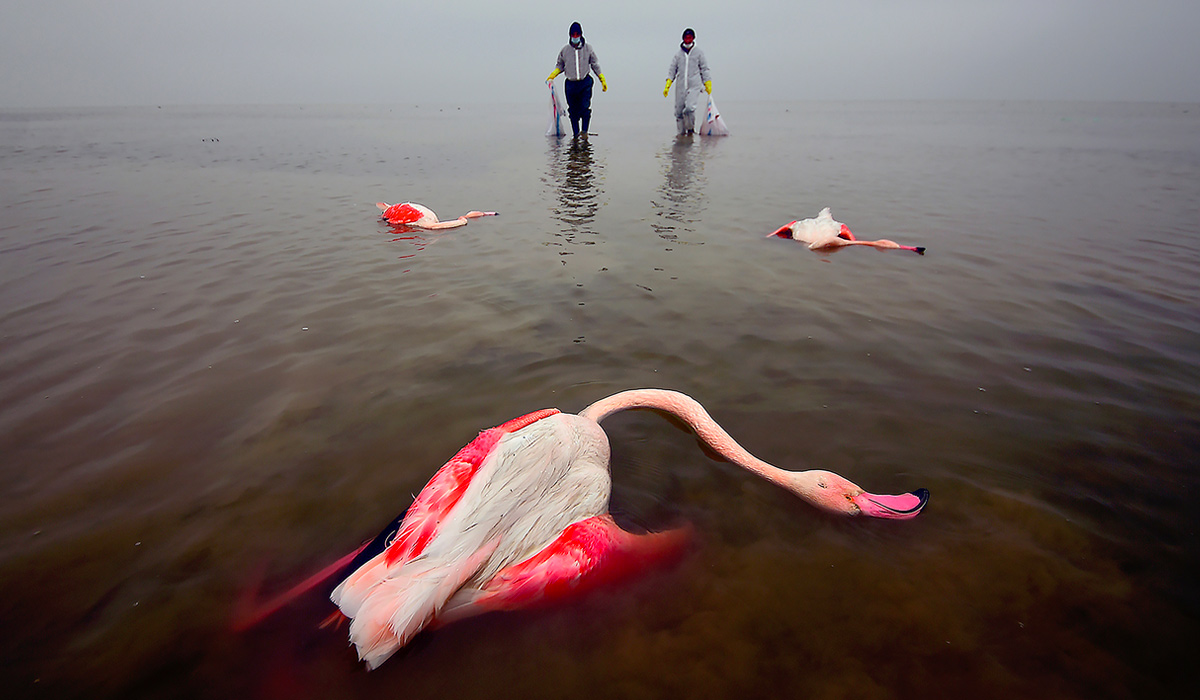Climate change: The loss of biodiversity also occurred 252 million years ago
An international team of scientists has discovered how the current loss of biodiversity could have already occurred in prehistoric times. The study concerns the instability and collapse of marine ecosystems during the Permian–Triassic (P–Tr) mass extinction, also called the Permian extinction. It would appear that the rate of loss of the species today exceeds that during the so-called ‘great death’ event.
The history of life on Earth has been punctuated by several mass extinctions. The largest of these, the Permian-Triassic mass extinction event occurred 252 million years ago. Scientists generally agree on its causes, but how this extinction came about remains a mystery.
What happened to ecosystems in the Permian-Triassic mass extinction
In a study published today in Current Biology, the international study team, composed of researchers from the California Academy of Sciences, University of Bristol, and the China University of Geosciences (Wuhan) analyzed marine ecosystems before, during, and after the Great Death to better understand the series of events that led to ecological destabilization.
They examined fossils from southern China, a shallow sea during the Permian-Triassic transition, to recreate the conditions of the ancient marine environment. By selecting species in gold, or groups of species that exploit resources in similar ways, the team was able to analyze predator-prey relationships and determine the functions the ancient species performed. Simulating these food webs provided a plausible idea of the ecosystem before, during and after the extinction event.
The University of Bristol study
“Fossil sites in China are perfect for this type of study because we need abundant fossils so we can reconstruct food webs,” said Prof Michael Benton of the University of Bristol. “Moreover, the rock sequences can be dated very precisely, so that we can trace the whole crisis step by step, when life in the oceans was killed by a thermal shock, ocean acidification and loss of oxygen from the seabed. marine“.
“The Permian-Triassic extinction serves as a model for studying biodiversity loss on our planet today,” explained Academy of Geology Curator Peter Roopnarine. “In this study, we looked at the extent of species loss and ecological collapse that occurred in two distinct phases, with the latter taking place approximately 60,000 years after the initial biodiversity collapse.”
The disappearance of 95% of life on Earth
The event itself wiped out 95% of life on Earth, or about 19 out of 20 species. Likely triggered by an increase in volcanic activity and a subsequent spike in atmospheric carbon dioxide, it caused climate conditions to resemble those caused by the man today, namely global warming, ocean acidification and marine deoxygenation.
“Despite the loss of more than half of Earth’s species in the first stage of extinction, ecosystems have remained relatively stable,” said academy researcher Yuangeng Huang, now at the China University of Geosciences.
The first and second stage of extinction
Species interactions decreased only slightly during the first phase of the extinction, but decreased significantly in the second phase, causing ecosystems to destabilize. “Ecosystems have been pushed to a fairly critical point from which they could not recover,” Huang continued.
An ecosystem as a whole is more resistant to environmental change when there are multiple species performing similar functions. If one species goes extinct, another can fill that niche and the ecosystem remains intact. This can be compared to when two groups in society perform the same service or economic function. The disappearance of a company still leaves the service and economy intact, but the reverse is the case where the service is monopolized by a single entity.
The loss of functional redundancy
“We found that the biodiversity loss in the first stage of the extinction was primarily a loss in this functional redundancy, leaving enough species to perform essential functions,” Roopnarine said. “But when environmental perturbations, such as global warming or ocean acidification, occurred later, when ecosystems lacked that strengthened resilience, that led to a sudden ecological collapse.”
For the study team, the findings underscore the importance of considering functional redundancy when evaluating modern conservation strategies and are a reminder of the urgent need for action to address today’s human-led biodiversity crisis.
The current loss of biodiversity
“We are currently losing species at a faster rate than in any of Earth’s past extinction events. It is likely that we are in the first stage of another, more severe mass extinction,” Huang said. “We cannot predict the tipping point that will send ecosystems into total collapse, but it is an inevitable outcome if we do not reverse biodiversity loss.”

